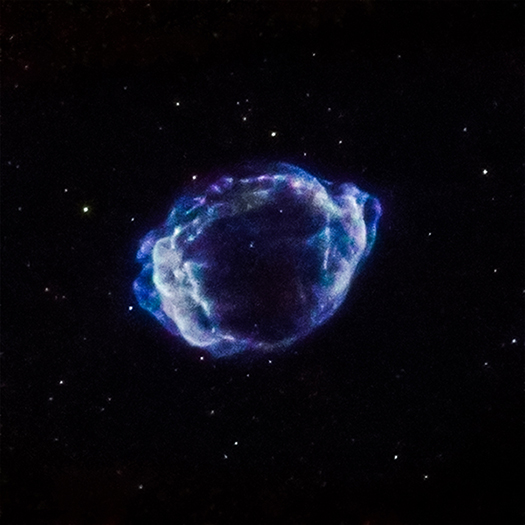Trigger for Milky Way's Youngest Supernova Identified
Scientists have used data from NASA's Chandra X-ray Observatory and the NSF's Jansky Very Large Array to determine the likely trigger for the most recent supernova in the Milky Way, as described in our latest press release.
Astronomers had previously identified G1.9+0.3 as the remnant of the most recent supernova in our Galaxy. It is estimated to have occurred about 110 years ago from the vantage point of Earth, in a dusty region of the Galaxy that blocked visible light from reaching Earth. This Chandra image shows G1.9+0.3 where low-energy X-rays are colored red, medium-energy X-rays are green, and a higher-energy band of X-rays is blue.
G1.9+0.3 belongs to the Type Ia category, an important class of supernovas exhibiting reliable patterns in their brightness that make them valuable tools for measuring the rate at which the universe is expanding. Most scientists agree that Type Ia supernovas occur when white dwarfs, the dense remnants of Sun-like stars that have run out of fuel, explode. However, there has been a debate over what triggers these white dwarf explosions. Two primary ideas are the accumulation of material onto a white dwarf from a companion star or the violent merger of two white dwarfs.
The researchers in this latest study applied a new technique that could have implications for understanding other Type Ia supernovas. They used archival Chandra and VLA data to examine how the expanding supernova remnant G1.0+0.3 interacts with the gas and dust surrounding the explosion. The resulting radio andX-ray emission provide clues as to the cause of the explosion. In particular, an increase in X-ray and radio brightness of the supernova remnant with time is expected only if a white dwarf merger took place, according to theoretical work.
More information at https://chandra.si.edu/photo/2016/g19/index.html
-Megan Watzke, CXC

